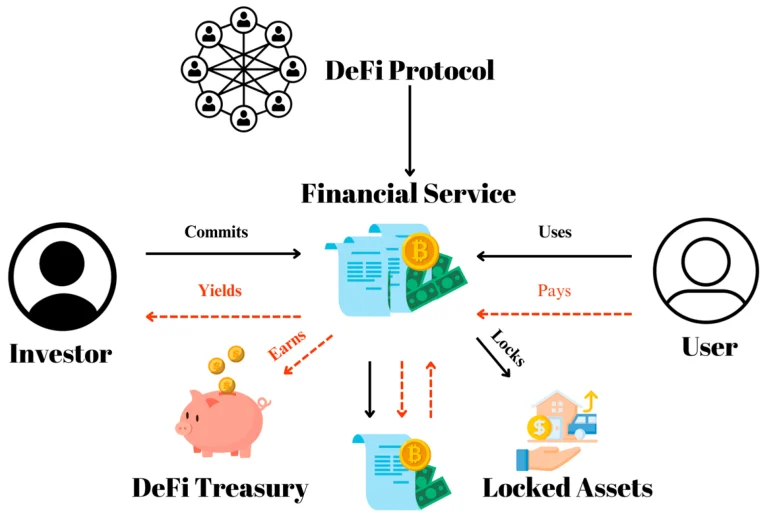Imagine you’re trying to mix oil and water. That’s what integrating Bitcoin with traditional financial systems can feel like. The tech challenges are real, but the potential rewards? Oh, they’re massive. So, if you’re ready to dive into this complex yet fascinating topic, including how MQL can play a role in this integration, click here.
Alright, let’s get our hands dirty. One of the first hurdles is the fundamental difference in how transactions are processed. Traditional banking relies on centralized systems—think of it as a big boss who oversees everything. Bitcoin? It’s decentralized. No boss here; just a bunch of nodes working together like an orchestra without a conductor.
This decentralization brings us to our next snag: speed and scalability. Traditional financial systems process thousands of transactions per second. Bitcoin’s blockchain? Not so much. It’s more like watching paint dry compared to Visa or Mastercard’s lightning-fast processing speeds.
And let’s not forget about security! Banks have been around for centuries and have built fortresses around their data. Bitcoin operates on cryptographic principles that are robust but still new territory for many institutions.
Now, picture this: You’re at a party, and everyone speaks different languages. That’s interoperability—or lack thereof—in action when integrating these two worlds. Financial institutions use established protocols while Bitcoin has its own set of rules and jargon.
To make matters worse, regulatory compliance is like walking through a minefield blindfolded. Governments worldwide have different takes on cryptocurrency regulations—some welcoming, others hostile or just plain confused.
But wait! There’s more! Let’s talk about user experience (UX). People are used to logging into their bank accounts with ease; they want that same simplicity when dealing with Bitcoin but often find themselves lost in translation between wallets, keys, and addresses.
Ever tried teaching your grandma how to use Snapchat? Integrating these systems feels somewhat similar for many developers who aren’t familiar with blockchain technology yet must adapt quickly or risk falling behind competitors who’ve already embraced it.
Now imagine all these issues wrapped up together like tangled Christmas lights—untangling one problem often leads you straight into another knotty mess!
But hey—we’re not here just for doom-and-gloom scenarios! Solutions are sprouting up left and right:
1) Layer 2 Solutions:
Think Lightning Network—a second layer added atop the existing blockchain network allowing faster transactions.
2) Cross-Chain Bridges:
These act as translators between different blockchains making them more compatible.
3) Regulatory Sandboxes:
Governments setting up controlled environments where companies can test innovations without breaking any laws (or too many).
4) API Integration:
Simplifying communication between traditional finance apps & crypto platforms via APIs designed specifically for seamless interaction.
5) Education & Training Programs:
Helping developers get up-to-speed quickly so they can tackle integration challenges head-on rather than feeling overwhelmed by them.
6) User-Friendly Interfaces:
Designing intuitive interfaces that make navigating both worlds easier even if you’re not tech-savvy!
So yeah—it ain’t easy peasy lemon squeezy—but nothing worth having ever is right?
Think of integrating Bitcoin with traditional financial systems like trying to merge two completely different ecosystems. It’s akin to introducing a new species into an existing habitat; there are bound to be some hiccups along the way.
One biggie is transaction finality. In traditional banking, once a transaction is confirmed, it’s pretty much set in stone. Bitcoin transactions, however, can take time to confirm and even then might need multiple confirmations before being considered final. This lag can be a deal-breaker for industries where speed is crucial.
Another thorny issue? Data privacy. Traditional banks have stringent protocols for safeguarding customer information. Bitcoin’s public ledger means anyone can see transaction details, albeit without personal identifiers. Balancing transparency with privacy is like walking a tightrope over a pit of alligators—one wrong move and you’re toast.
And oh boy, let’s not overlook the energy consumption debate! Traditional financial systems are relatively energy-efficient compared to Bitcoin mining operations that guzzle electricity like there’s no tomorrow. Integrating these systems requires finding ways to make Bitcoin more eco-friendly or offsetting its carbon footprint somehow.
Then there’s the challenge of liquidity management. Banks are used to dealing with fiat currencies that have relatively stable values. Bitcoin’s price swings more wildly than a roller coaster at an amusement park! Financial institutions must develop strategies to manage this volatility effectively if they want smooth integration.
Let me share an anecdote: A friend of mine works at a bank and recently attended a blockchain conference. He came back saying it felt like stepping into another dimension—terms he’d never heard before, concepts that seemed alien yet intriguing. This illustrates how steep the learning curve can be for those entrenched in traditional finance when diving into the crypto space.
Now imagine having to integrate compliance measures across both systems—it’s like trying to fit a square peg into a round hole! Anti-money laundering (AML) and know-your-customer (KYC) regulations are bread-and-butter for banks but implementing them within decentralized networks presents unique challenges.
But hey, every cloud has its silver lining! Innovations such as smart contracts offer promising solutions by automating processes traditionally handled manually within banks—think loan approvals or insurance claims processing done via code rather than paper-pushing bureaucrats!



